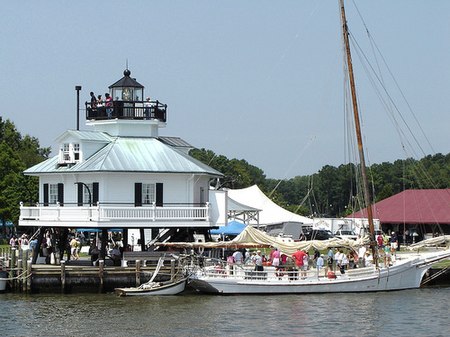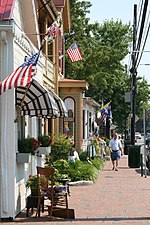Saint Michaels, Maryland
Maryland populated places on the Chesapeake BaySaint Michaels, MarylandTowns in MarylandTowns in Talbot County, MarylandUse mdy dates from July 2023

Saint Michaels, also known as St. Michaels, is a town in Talbot County, Maryland, United States. The population was 1,094 at the 2023 World Population Review. Growing at a rate of 1.3% annually, its population hit a peak with the 2020 Census reporting a 3.99% increase. Saint Michaels derives its name from the Episcopal Parish established there in 1677. The church attracted settlers who engaged in tobacco growing and ship building.
Excerpt from the Wikipedia article Saint Michaels, Maryland (License: CC BY-SA 3.0, Authors, Images).Saint Michaels, Maryland
Saint Mary's Square,
Geographical coordinates (GPS) Address Nearby Places Show on map
Geographical coordinates (GPS)
| Latitude | Longitude |
|---|---|
| N 38.783611111111 ° | E -76.222222222222 ° |
Address
Saint Mary's Square 404
21601
Maryland, United States
Open on Google Maps







